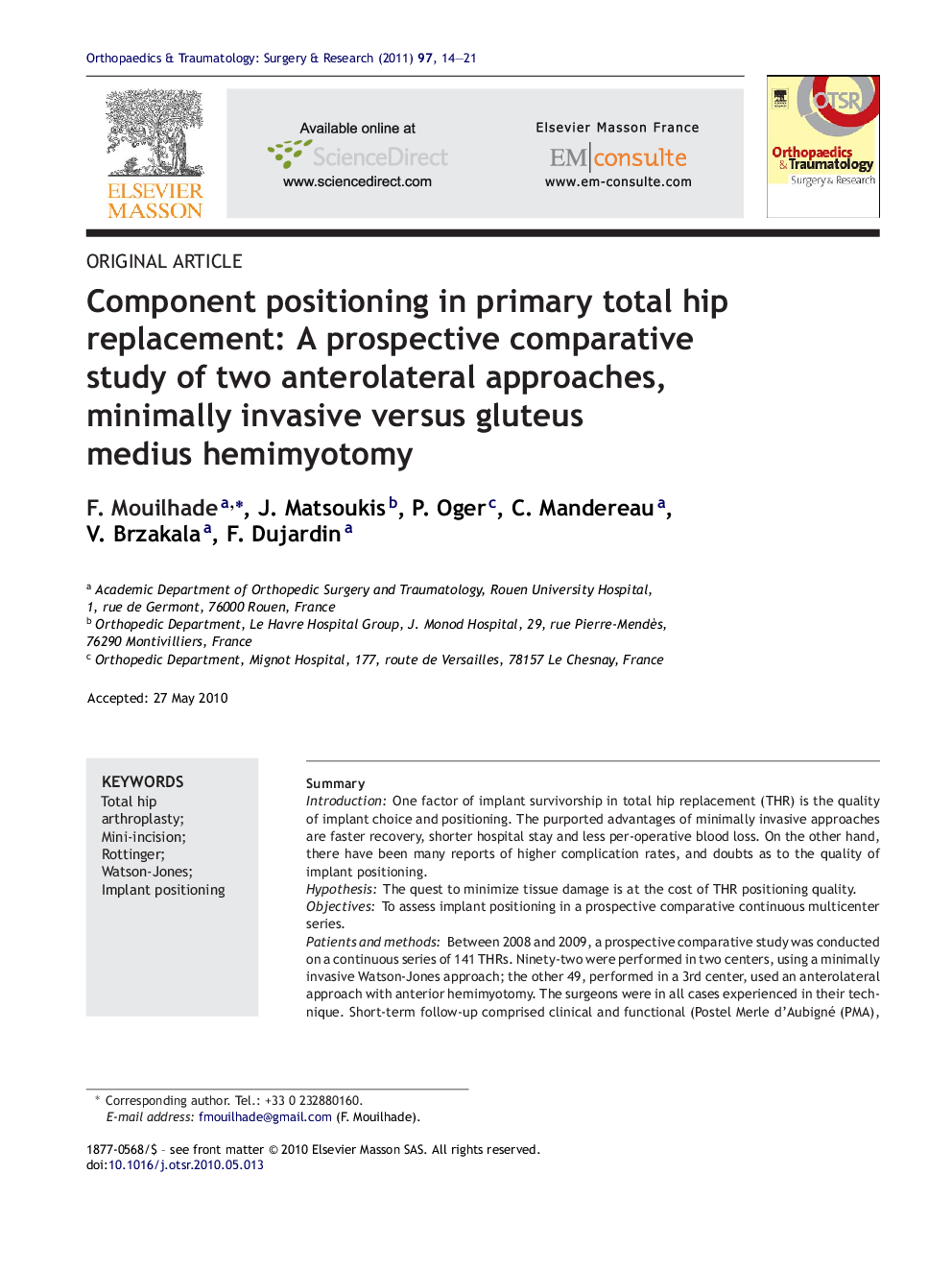| کد مقاله | کد نشریه | سال انتشار | مقاله انگلیسی | نسخه تمام متن |
|---|---|---|---|---|
| 4082124 | 1267624 | 2011 | 8 صفحه PDF | دانلود رایگان |

SummaryIntroductionOne factor of implant survivorship in total hip replacement (THR) is the quality of implant choice and positioning. The purported advantages of minimally invasive approaches are faster recovery, shorter hospital stay and less per-operative blood loss. On the other hand, there have been many reports of higher complication rates, and doubts as to the quality of implant positioning.HypothesisThe quest to minimize tissue damage is at the cost of THR positioning quality.ObjectivesTo assess implant positioning in a prospective comparative continuous multicenter series.Patients and methodsBetween 2008 and 2009, a prospective comparative study was conducted on a continuous series of 141 THRs. Ninety-two were performed in two centers, using a minimally invasive Watson-Jones approach; the other 49, performed in a 3rd center, used an anterolateral approach with anterior hemimyotomy. The surgeons were in all cases experienced in their technique. Short-term follow-up comprised clinical and functional (Postel Merle d’Aubigné (PMA), Harris, SF12, WOMAC) and biological assessment (serum creatine phosphokinase (CPK), myoglobinemia, hematocrit) and analysis of complications and of implant positioning on X-ray and CT-scan.ResultsOn the Watson-Jones approach, surgery time was longer; day-1 analgesic administration was lower; PMA, Harris and WOMAC scores were better at 6 weeks; and CPK levels were lower at 24 and 48 hours. There were no significant differences on the other clinical and biological criteria. Implant positioning analysis revealed significantly greater combined anteversion and greater variation in acetabular inclination mean with the Watson-Jones approach, but no differences in cup positioning, femoral stem positioning, or limb length discrepancy.DiscussionThe minimally invasive Watson-Jones approach provided faster recovery and less muscular damage. However, implant positioning was less precise in terms of acetabular cup inclination.Level of evidenceLevel III. Prospective, comparative, non-randomized.
Journal: Orthopaedics & Traumatology: Surgery & Research - Volume 97, Issue 1, February 2011, Pages 14–21